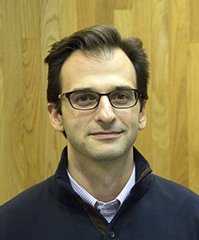Air Pollutant Exposure: Leveraging High Time Resolution Data to Understand Pollutant Source Impacts
Albert A. Presto
Mechanical Engineering, Carnegie Mellon University
ABSTRACT: Temporally and spatially resolved measurements and models of air pollutant concentrations are needed to advance exposure assessment, to investigate pollutant hotspots, and to elucidate relationships between specific pollutants (e.g., PM components) and human health. Mobile sampling with high time resolution data collection (~1 sec - 1 min) can be used to build pollutant spatial maps with high resolution (10s-100s of meters) and to investigate impacts of specific emissions sources. This seminar describes challenges associated with using mobile sampling or other short-duration sampling techniques for generating pollutant spatial maps. A recent sampling campaign in Pittsburgh, Pennsylvania, a city with substantial traffic and industrial emissions, is presented as a case study of data collection and spatial model development. Spatially resolved pollutant maps are applied to investigate environmental justice and human health impacts of pollutant exposures. Source apportionment techniques are used to resolve impacts resulting from specific emissions sources (e.g., traffic versus industrial emissions), which can in turn inform future policy directions.
